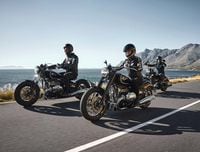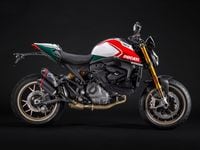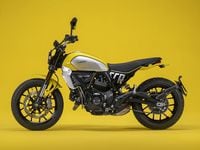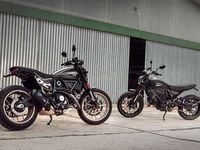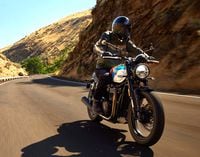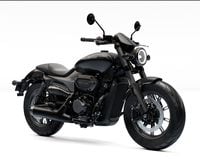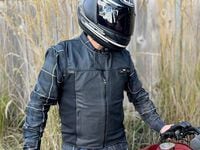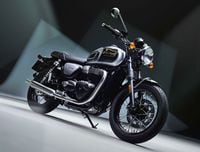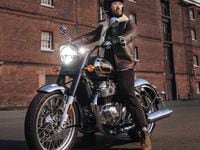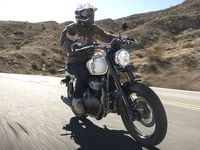From its introduction in 1957 until the late 1960s, Harley-Davidson's 883 Sportster was a badass bike. Bigger, more aggressively tuned than many motorcycles of the day, and much lighter than Harley's 74-series heavyweights, the Sportster, especially the hot CH version, was a bike to be respected.
But toward the end of the '60s, its performance was overtaken by faster, more efficient machines, most with less displacement. The Sportster began to slip from its superbike status, and even adding 1000, 1100 and 1200cc engines couldn't salvage its powerful personality when other 900s were running quarter-miles under 11 seconds. As other marques introduced ever-larger twins, the Sporty eventually slipped into the position of companion bike, something for riders who wanted a piece of the Harley legend without the price or weight of the bigger twins. There were some Sportster loyalists who preferred it to the big twins, but many of them melted away when Harley introduced Sport versions of its Dyna big twins that mirrored some of the Sportster's attitude but were bigger, stronger, better finished and, thanks to rubber mounts, much smoother.
With the '04 models, Harley changes all that. Although they retain the same basic frame and engine layout, the new Sportsters have been almost totally revised, and are again motorcycles that can be taken seriously on their own merits. There are a number of significant changes -- engine improvements, stiffer frames, new brakes, improved finish, etc. -- but the most important new feature of the 2004 Sportster line is its system of rubber mounts that insulates the rider from the engine's vibration.
The Sportster was one of the very last, and the most popular, of the hard-shaking motorcycles, a fact that diminished the bike. You could admire its unique lines, its distinct position in the world of motorcycles, and other aspects of the bike, and still avoid it like the plague because of its vibration.
Vibration, at least on motorcycles, is a bad thing. It makes otherwise good seats uncomfortable, can make it hard to hold a handgrip firmly, and can shake your feet off footrests. Since revving the engine usually increases the magnitude and frequency of vibration, it can be a performance killer because extracting the horsepower that comes at greater rpms is just too unpleasant. And it is tough on the motorcycle itself. Components and their attaching apparatus must be built to withstand the shaking or isolated from it to reduce the wear and tear that shortens their lives.
But for '04, the Sportster blocks vibration with a new frame that incorporates three stabilizer links and rubber engine mounts in place of the solid engine mounts on previous Sportsters. The frame itself is also much stiffer. Even though the engine can no longer serve as a structural member the way it could with a solid mounting system, Harley says the chassis is 26 percent stiffer than previously. It definitely feels that way on the road. On the downside, the beefed-up frame is also significantly heavier, both because of the new engine-mounting hardware and the stronger frame pieces. The added frame mass is the primary reason that the four new Sportsters weigh more -- between 54 and 66 pounds, or about 10 to 12 percent -- than their '03 counterparts.
The same frame, which incorporates a new rear fender for the wider (150mm instead of the previous 130mm) rear tire, is used on all four XL models. The new structure looks cleaner, with a smoother finish in exposed areas. It incorporates a steering-head lock, and permits lower saddle heights, though most other dimensions are similar to the previous frames. The saddles on the Custom models are almost an inch lower than the seat on the now-discontinued 883 Hugger, which listed a low seat height at the top of its rsum. The frame redesign has also moved the battery and oil tank under the saddle, and the battery is now under a cover that symmetrically matches oil tank lines on the right. This means that the edges of the battery can no longer dig into your leg. One of the first things that most people comment on when they closely examine a '04 Sportster is the oil tank's push-button dipstick. It works like one of those push-to-release cabinet latches. Push the flush cap once and it pops up so you can release it with a quarter turn. Push in the projecting cap to latch it flush again.
In addition to the Hugger, the dirttracker-style XL883R is also gone from the 883 line, leaving just the standard XL883 and the XL883C Custom. The bikes we tested here are Harley's only 1200 models, the XL1200C Custom and the XL1200R Roadster, which is a cross between '03's basic XL1200 Sportster and the Sportster XL1200S Sport. The Roadster lacks the old Sport's adjustable suspension, but includes its dual front brakes, tachometer and low-rise handlebar. And both 1200s have hot-rodding tweaks that add about 15 percent more power than last year's basic 1200.
The Customs are immediately distinguished by their skinny 21-inch wire wheels. The four also share a restyled 4.5-gallon fuel tank instead of the traditional 3.3-gallon capacity carried over to the new, traditionally styled tank used on the XL883 and XL1200R. To keep them low, the Customs' dual rear shocks are shorter, with less travel (2.4 inches instead of 4.1 inches) than the other XLs. They feature disc-style 16-inch rear wheels rather than the 13-spoke designs of the 883 and 1200R. The Customs have forward foot controls -- though less radical than in the past -- and mount their handlebars on risers that also support the speedometer and warning lights. Of course, they also have a bit more chrome and shine (the headlight shells, for example) than the 883 and 1200R.
The new Sportsters get a variety of engine finish treatments. The 883s have silver powdercoat with some polished parts. The 1200 Roadster gets silver powdercoated cases and covers with black cylinders and polished fins. The 1200 Custom has black powdercoated engine cases and cylinders broken up with polished cylinder fins and chrome cases. Many covers -- including the primary, derby, sprocket and, most noticeably, the redesigned, two-piece rocker-box -- have been restyled, and the engines' overall finish quality has been improved. The airbox has a new shape. The staggered dual-muffler exhaust system looks much the same at first glance, except that there is no longer a crossover tube blocking the view of the engine. Closer examination reveals that there is a much more complex and uglier crossover system hidden under the mufflers.
However, the big news in the engines is mechanical. The new motors are still configured like previous Sportster engines, with the same layout, air cooling, bore and stroke, etc. However, they have been strengthened and massaged both to make a bit more power and to stand up to the added revs that riders are likely to demand now that they no longer risk having their fillings shaken out to enjoy them.
The changes start with better cooling. The heads and cylinders have bigger fins, and oil is now sprayed under the pistons to aid cooling. New rings extend cylinder life. Ignition timing is now cued off the crankshaft for more accuracy, though the traditional Sportster timing cover remains. Virtually all the gasket points in the engine have been improved to banish leaks. Both 1200s have the same engine, which makes about 15 percent more power than last year's standard 1200 mill. The new 1203cc engine gets hotter cams taken from the Buell XB engine, though, at 70 horsepower, the Sportster engine makes less power than the Buell's similar engine, largely because the Buell sucks through a much larger airbox (which the sportbike can use because styling convention isn't such an issue). Unlike the '03 Sportster 1200 Sport engine, this will not have dual spark plugs because its combustion-chamber design does not require them to inhibit detonation. The new 1200's compression ratio is 9.7:1, compared with 10.0:1 for last year's Sport and 9.0:1 for the other '03 1200s. Lighter pistons, rods and valve-train components allow the 1200 to rev 500 rpm faster to 6000 rpm. The 883 has a much milder power gain, achieved mostly through other upgrades, like the airbox, adding a modest two horsepower to give it a claimed 53 ponies.
Because of the added weight of the new bikes, the additional power does not translate into major performance improvements on the road, so we were most interested in riding the new 1200s with their greater power gains, and they are the focus of this test. (You can read our impressions of the 883 on our Web site at www.motorcyclecruiser.com/roadtests/HD04FirstRide/.) Even if the power-to-weight difference between the new and old models is not immense, you do go faster because you can rev the engine without penalty. The engine feels a bit more willing, and the vibration is vastly lessened, so you aren't punished. Both rider and bike feel more relaxed when blasting away from a light or accelerating between corners. There are some conditions -- about 4500 rpm under a light load -- when vibration is still apparent, but you have to be going pretty fast (more than 85 mph) for it to intrude at a steady speed in top gear.
With vibration blocked, the rider has an opportunity to appreciate the pleasant characteristics of the Sportster 1200 engine. Throttle response remains linear, with little abruptness if you get ham-handed. The drivetrain has no lash, and minor refinements have made shifting smoother, lighter and quieter. The clutch is still a bit heavy to pull (the 883's clutch effort has been lightened, though), but engages predictably and smoothly. We used to twist the throttle to prime the engine with the throttle pump for cold starting, but that no longer seems to be effective. The new engine just wants choke, and is fairly cold-blooded, requiring several minutes before it will run smoothly. If you take the choke off before that, it will often stumble as you open the throttle. Even when warm, it likes to have its throat cleared (by revving it once) after idling, or it will sometimes cough as you apply throttle and clutch. The rpm limit is no longer set by how hard you can stand to get shaken, but rather by the engine itself. Rev it too high (easier with the Custom, which lacks a tachometer) and you will encounter the rev limiter, which gradually deprives you of power.
The Sportster, even as a 1200, is well past its days as a superbike, but operating up near that point is much more fun than it used to be. You can exploit its wide range of power, which starts at about 2000 rpm and extends almost to the 6000-rpm redline. It will pass other vehicles respectably even in top gear, but downshifting no longer carries a big vibration penalty, which greatly improves the bike's capability. Even though the numbers don't show a big performance gain, extracting that performance is a much more agreeable experience.
Both 1200s are now smooth at normal highway speeds, and new, smaller handgrips make it easier to reach and cover the front brake and clutch levers (though we'd still like adjustable levers). However, the ergonomic experiences differ sharply. The Custom lets you sit almost straight-legged (depending on your inseam), with your feet forward, though the footpegs are not the stretch they used to be. The leg position helps you hold your position against strong braking forces, and is relaxing for many riders. The bars pull back more than previous Sportster Customs, so the position overall is less of a "clamshell" shape. The saddle is adequate, and better for most of us than the Roadster's perch, but you'll still want to change it if you plan extended rides. The big drawback of the Custom in terms of comfort is its limited rear suspension travel; big bumps connect pretty hard with the rider. With its pegs further rearward and a low-rise handlebar set right down on the top triple clamp, the Roadster's riding position is considerably different. Your legs are bent more, and most riders lean forward a bit to reach the grips. It is less awkward to stand when you roll over large bumps, though the added 1.7 inches of rear-suspension travel mean that bumps don't hit you so hard, and most pass without notice. The seat is a bit roomier, but not as well padded as the Custom's.
In terms of handling, the biggest difference is in cornering ground clearance. The longer-shocked, higher-riding Roadster has substantially more lean angle available. The Custom starts dragging -- rather firmly on the left -- at a much shallower angle than the Roadster. The Custom requires slightly less steering effort than the Roadster, presumably because of the front tire difference, but neither steers heavily or tries to straighten up hard under braking. Both are stable at speed in corners, though the Custom gets bounced around more in bumpy bends.
Harley has adopted new silver-finished Nissin brake calipers for the Sportsters, which appear smaller, sleeker and lighter. Dual-piston calipers slow the front wheels, and a single piston brakes the rear, both with 11.5-inch rotors. Harley says, and we confirmed, that the new brakes offer reduced lever effort and a bit more initial bite. Obviously, with dual brakes on the front wheel, the Roadster has more power in a full-goose stop, and it has a bit more traction to deal with it. However, the Custom front brake performed admirably as well, and control was good on both.
Improved detailing and finishes make the Sportsters notably more handsome than their predecessors, according to our staff and many sidewalk styling critics. The bikes just look a bit more finished and elegant overall. Almost everywhere you look, whether at big pieces like the engine or small things like the petcock, the pieces appear cleaner. The graphics adopted for the Roadster's fuel tank (decals applied under enough clear coat to make them seem much smoother than those on many more expensive bikes) are reminiscent of racing logos used over the years.
Although they are readily identifiable as Sportsters, the new 1200s offer much different riding experiences than their predecessors. They have lost none of the attractions of previous generations (unless you really get off on vibration), and have become much more fun to ride, particularly for those who like to go long and hard. We expect them to be less troublesome than any of their hard-shaking predecessors as well. The downsides are a few more pounds and slightly higher prices. However, the price increases are likely to be softened by what we expect to be improved availability and perhaps even some competition for sales.
After all, the world has been waiting a long time for such simple wonders.
**High Points
** * Smooth at last!
Better detailing
More power
**Low Points
**
More weight
A bit more money
Now everybody's going to want one
**First Changes
**
New saddle
Tach for the Custom to better exploit the engine
Better shocks for the Custom
RIDING POSITIONS
Art Friedman: Sportsters have always had an individual style that I kind of liked, but despite that I never had much desire to ride them. It was just too uncomfortable and unpleasant, largely because of the vibration. With the vibration mostly vanquished, I suddenly not only like riding them, but I'd actually like to own a Roadster. I really enjoyed brisking it around some of my favorite mountain roads, and with a seat change, I'd enjoy traveling on it, too.
That's a major change from a bike that I generally tried to avoid to a place on the list of the five or six cruisers I'd consider buying.
_Art Friedman
Art fields e-mail at _ at _ Art.Friedman@sorc.com.
Cherney: Doesn't seem that long ago I was rattling down Pacific Coast Highway aboard my 1990 H-D Sportster 1200, frame-mounted Evo mill in full shake, turn signals within a hair of vibrating off and fillings loosening.
Now the Sportster has been dragged into the 21st century, and I can rev it without fear of numbness (higher redline, thanks). Engine response is way livelier. Can't get excited about the still-stout clutch pull and slightly smoother gear engagement, but it's a start. The Sportster styling is recognizable, though I prefer the Roadster's more upright position to the Custom's feet-forward arrangement. The Roadster's dual discs also score points, but the Custom's wider tank encapsulates the sleek Sportster sensibility better. Make mine Custom.
Bottom line: Both are more fun to ride than ever. What's next...liquid cooling?
**SPECIFICATIONS
2004 Harley-Davidson Sportster 1200 Custom**
Designation: XL 1200C
Suggested base price: $9425 ($9700 California), plus $185 shipping
Standard colors: Black
Extra-cost colors: Red, deep red, blue, deep blue, silver, white (add $180), blue/black, gold/black, red/silver, teal/silver (add $420)
Standard warranty: 24 months, unlimited miles
Recommended service interval: 5000 miles
ENGINE & DRIVETRAIN
Type: Air-cooled, 45-degree tandem V-twin
Valve arrangement: OHC, one intake valve, one exhaust valve operated by pushrods and hydraulic lifters
Displacement, bore x stroke: 1203cc, 88.85mm x 96.82mm
Compression ratio: 9.7:1
Carburetion: 1, 40mm CV
Lubrication: Dry sump, 3.6 quarts
Minimum fuel grade: 91 octane
Transmission: Wet clutch, five speeds
Final drive: Belt, 68/30
CHASSIS
Wet weight: 598 lbs./54% rear wheel
GVWR: 1000 lbs.
Seat height: 28.1 in.
Wheelbase: 60.4 in.
Overall length: 90.3 in.
Rake/trail: 30.1 degrees / 4.7 in.
Wheels: Wire-spoke, 2.15 x 21 front; cast, 3.0 x 16 rear
Front tire: MH90-21 Dunlop/Harley-Davidson D401F
Rear tire: 150/80B-16 Dunlop/Harley-Davidson D401
Front brake: Double-action, two-piston caliper, 11.5 in. disc
Rear brake: Single-action, one-piston caliper, 11.5 in. disc
Front suspension: 39mm stanchions, 5.6 in. travel
Rear suspension: Two dampers, 2.4 in. travel, adjustable for spring preload
Fuel capacity: 4.5 gal. (1.0 gal. reserve)
Handlebar width: 32.4 in., 1.0 in. diameter
ELECTRICAL & INSTRUMENTATION
Charging output: 250 watts
Battery: 12v, 12 AH, maintenance-free
Forward lighting: 5.5 in. 55/60-watt headlight, position lights
Taillight: Single bulb
Instruments: Speedometer, LCD odometer/dual tripmeter; warning lights for high beam, turn signals, neutral, oil pressure
PERFORMANCE
Fuel mileage: 34 to 51 mpg, 40.6 mpg average
Average range: 182 miles
RPM at 60 mph, top gear: 2800
200-yard, top-gear acceleration from 50 mph, terminal speed: 66.9 mph
Quarter-mile acceleration: 13.47 sec. @ 94.9 mph
2004 Harley-Davidson Sportster 1200 Roadster
Designation: XL 1200R
Suggested base price: $8495 ($8615 California), plus $185 shipping
Standard colors: Black
Extra-cost colors: Red, deep red, blue, silver, teal, gold, orange (add $180)
Standard warranty: 24 months, unlimited miles
Recommended service interval: 5000 miles
ENGINE & DRIVETRAIN
Type: Air-cooled, 45-degree tandem V-twin
Valve arrangement: OHC, one intake valve, one exhaust valve operated by pushrods and hydraulic lifters
Displacement, bore x stroke: 1203cc, 88.85mm x 96.82mm
Compression ratio: 9.7:1
Carburetion: 1, 40mm CV
Lubrication: Dry sump, 3.6 quarts
Minimum fuel grade: 91 octane
Transmission: Wet clutch, five speeds
Final drive: Belt, 68/30
CHASSIS
Wet weight: 593 lbs./53% rear wheel
GVWR: 1001 lbs.
Seat height: 29.9 in.
Wheelbase: 60.0 in.
Overall length: 90.1 in.
Rake/trail: 29.6 degrees / 4.6 in.
Wheels: Cast alloy, 2.15 x 19 front; 3.0 x 16 rear
Front tire: 100/90-19 Dunlop/Harley-Davidson D401F
Rear tire: 150/80B-16 Dunlop/Harley-Davidson D401
Front brake: Two, double-action, two-piston calipers, 11.5 in. discs
Rear brake: Single-action, one-piston caliper, 11.5 in. disc
Front suspension: 39mm stanchions, 5.6 in. travel
Rear suspension: Two dampers, 2.1 in. travel, adjustable for spring preload
Fuel capacity: 3.3 gal. (0.8 gal. reserve)
Handlebar width: 31.7 in., 1.0 in. diameter
ELECTRICAL & INSTRUMENTATION
Charging output: 250 watts
Battery: 12v, 12 AH, maintenance-free
Forward lighting: 5.5 in. 55/60-watt headlight, position lights
Taillight: Single bulb
Instruments: Speedometer, tachometer, LCD odometer/dual tripmeter; warning lights for high beam, turn signals, neutral, oil pressure
PERFORMANCE
Fuel mileage: 33 to 49 mpg, 39.4 mpg average
Average range: 130 miles
RPM at 60 mph, top gear: 2800
200-yard, top-gear acceleration from 50 mph, terminal speed: 66.6 mph
Quarter-mile acceleration: 13.43 sec. @ 95.2 mph
Additional motorcycle road tests and comparison tests are available at the Road Tests section of MotorcycleCruiser.com.










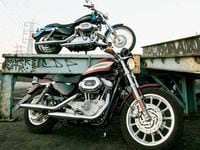
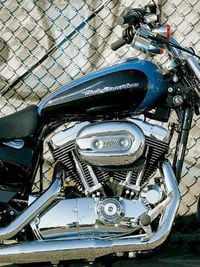
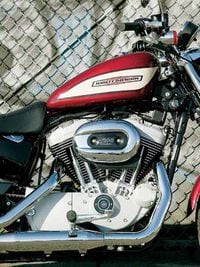
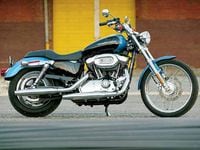
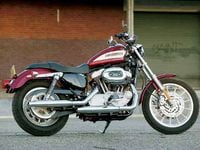
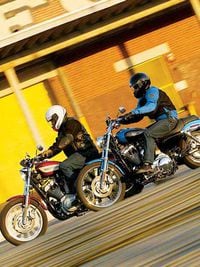
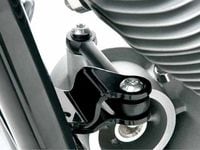
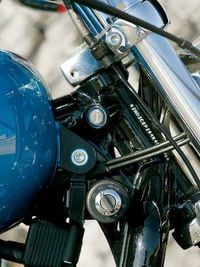
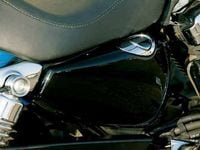
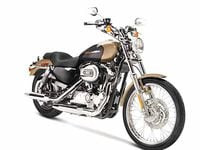
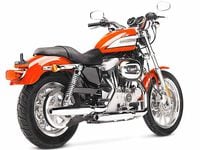
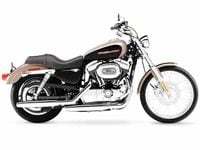
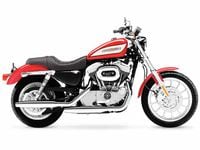
/cloudfront-us-east-1.images.arcpublishing.com/octane/H6Z2IC7WYRBXZNQS4MI3SZ5KPQ.jpg)
/cloudfront-us-east-1.images.arcpublishing.com/octane/IWO5T5PBT5E4HFQ5GK47H5YXR4.jpg)
/cloudfront-us-east-1.images.arcpublishing.com/octane/OQVCJOABCFC5NBEF2KIGRCV3XA.jpg)
/cloudfront-us-east-1.images.arcpublishing.com/octane/F3O2DGLA4ZBDJGNVV6T2IUTWK4.jpg)
/cloudfront-us-east-1.images.arcpublishing.com/octane/ZXYQE3MHLFDSPKNGWL7ER5WJ4U.jpg)
/cloudfront-us-east-1.images.arcpublishing.com/octane/RDF24VM7WVCOBPIR3V3R4KS63U.jpg)
/cloudfront-us-east-1.images.arcpublishing.com/octane/W7RSIBFISNHJLIJESSWTEBTZRQ.jpg)
/cloudfront-us-east-1.images.arcpublishing.com/octane/AERA26ENRNBW3K324YWCPEXYKM.jpg)
/cloudfront-us-east-1.images.arcpublishing.com/octane/YWX3YX7QBBHFXFDMEEEKRG4XJE.jpg)
/cloudfront-us-east-1.images.arcpublishing.com/octane/I7OKI53SZNDOBD2QPXV5VW4AR4.jpg)
/cloudfront-us-east-1.images.arcpublishing.com/octane/IH52EK3ZYZEDRD3HI3QAYOQOQY.jpg)
/cloudfront-us-east-1.images.arcpublishing.com/octane/K2FSAN7OWNAXRJBY32DMVINA44.jpg)
/cloudfront-us-east-1.images.arcpublishing.com/octane/G4XK7JL24FCUTKLZWUFVXOSOGE.jpg)
/cloudfront-us-east-1.images.arcpublishing.com/octane/JJNXVAC27ZCDDCMTHTQZTHO55Y.jpg)
